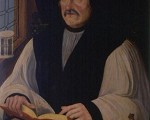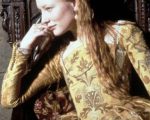
The Tudor period has been brought to life on the silver screen and on TV in a multitude of movies and TV series. Test your knowledge and your memory with this fun quiz.
[Read More...]
The Tudor period has been brought to life on the silver screen and on TV in a multitude of movies and TV series. Test your knowledge and your memory with this fun quiz.
[Read More...]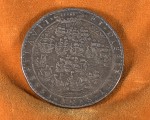
On 20th August 1588, a thanksgiving service was held at St Paul’s in London to give thanks to God for England’s victory over the Spanish Armada. The Armada had been defeated, obliterated in fact, yet the English fleet was left intact and only around 100 English men were lost in the skirmishes.
[Read More...]
Thank you to those of you who left comments regarding what you want me to talk about in my Claire Chats videos, I really appreciate it. Somehow I managed to muddle up Kathryn and Margaret’s comments, and it was actually Margaret who asked me to talk about myself. I’m so sorry, Kathryn and Margaret, I feel awful about mixing you two up but I hope that you enjoy this video.
[Read More...]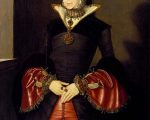
The following letter was written by Princess Mary, the future Mary I, to her brother Edward VI on 19th August 1551. Henry Ellis, editor of Original Letters, Illustrative of English History… explains:
“The following Letter from the Princess Mary to her brother, is preserved upon the Books of the Privy Council. It is probably the best specimen which we have in our power to give of her talent at writing: and, with the singular Paper which follows it by way of comment, will show her to have been a woman of more intellect than the world has usually supposed. Queen Catherine Parr took great pains in the education both of Mary and Elizabeth.
[Read More...]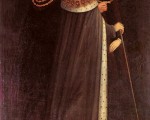
On 17th August 1510, the second year of King Henry VIII’s reign, Henry VII’s former chief administrators, Sir Edmund Dudley and Sir Richard Empson, were beheaded on Tower Hill after being found guilty of treason.
Chronicler Edward Hall records:
“The kynge beyng thus in hys progresse harde euery daye more and more complayntes of Empson and Dudley, wherfore he sent wryttes to the Shynfes of London, to put them in execucion, and so the xvii. day of August, they were both behedded at the Towre hyl, and their bodies buryed and their heades.”
[Read More...]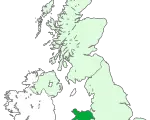
The House of Tudor originated in Wales but how much do you know about the Tudors’ links with Wales? Find out with this fun quiz.
[Read More...]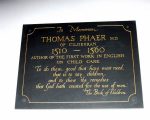
On this day in history, 12th August 1560, the translator, lawyer, physician and paediatrician Thomas Phaer made his will after suffering an accident which made his right hand completely useless. His date of death is unknown, but he died at his Cilgerran estate in Pembrokeshire, Wales, within weeks of his will being drawn up.
Phaer started out his working life as a lawyer and published two legal handbooks, Natura brevium (c1530-1535) and A Newe Book of Presidentes (1543), but changed direction in the early 1540s to become a physician and medical writer. His medical works include The Boke of Chyldren (1545), the first book on paediatrics written in English, A Goodly Bryefe Treatise of the Pestylence and A Declaration of the Veynes. He has become known as the “Father of English Paediatrics”.
[Read More...]
I love strawberries so when I saw this Tudor/Stuart strawberry tart recipe I just had to give it a go. It was delicious and takes very little preparation and time.
[Read More...]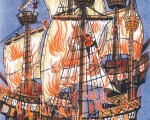
On the 10th August 1512, the Battle of Saint-Mathieu, a battle in the War of the League of Cambrai, took place between the English and Franco-Breton fleets off the coast of Brest. England at this time was allied with Spain and the Holy Roman Empire against France.
[Read More...]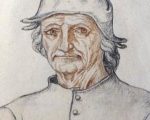
On Wednesday 9 August 1516, a funeral mass was sung for the soul of Jeroen von Aeken. Better known by his artistic name of Hieronymus Bosch, he was 58 to 66 years old at death. Dying in the city of ’s-Hertogenbosch, located in the Brabant, Bosch may have passed on from pleurisy which was plaguing the city around that time and claimed the lives of his neighbour, a friend, and one of his cousins.
Bosch was born between 1450 and 1457 into a family of painters; his great-grandfather, grandfather, and other relatives were all artists. Bosch likely completed his first works in the family’s studio, where they would sometimes collaborate on works. His paintings featured religious iconography mixed in with sometimes dreamy, sometimes nightmarish elements.
[Read More...]
On 9th August 1588, Queen Elizabeth I appeared before her troops gathered at Tilbury Fort, on the Thames estuary in Essex, and gave her famous “Tilbury Speech”.
[Read More...]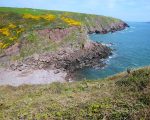
After following the long exile of Jasper and Henry Tudor in Brittany, I have now returned to Pembrokeshire in West Wales. The Tudors had made an unsuccessful attempt to invade England in 1483 but learned from this near disaster. On Monday 1st of August, 1485 they sailed again from the mouth of the Seine with their mercenary army of some four thousand men to challenge King Richard III for the crown.
It seems the sea voyage led by the Poulian De Dieppe, flagship of their capable captain, Guillaume de Casenove, was uneventful and had the benefit of favourable winds. They made landfall at Mill Bay, a secluded, pebble-strewn beach in the far west of Wales just before sunset on Sunday 7th August. It is reported that, on going ashore, Henry Tudor kissed the ground and recited a Psalm in Latin. Some accounts suggest it was Psalm 23, but the consensus was Psalm 46: ‘Judge me, O God, and plead my cause against an ungodly nation: O deliver me from the deceitful and unjust man.’
[Read More...]
In this series, I have followed Jasper Tudor and his nephew Henry’s escape from Tenby in Wales to their long exile in Brittany. Young Henry Tudor found himself deep in the forest at the remote Forteresse de Largoët, outside of the Breton town of Elven. He would have missed the company of his uncle Jasper, who was now in a far grander place, the Château de Josselin.
Originating from the year 1008, the château overlooking the River Oust has changed many times over the centuries. Olivier de Clisson, Constable of France, became Lord of Josselin in 1370 and rebuilt the fortress with eight high towers and married his daughter Beatrice to Viscount Alain de Rohan. During the religious wars of the seventeenth century, Duke Henri de Rohan commanded the Calvinists and his château was sacked by Cardinal de Richelieu. Only four of the original towers remain today, but the château is still home to the fourteenth Duke Josselin de Rohan.
[Read More...]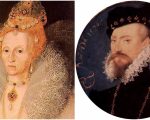
Even though the remaining ships of the Spanish Armada were homeward bound following the defeat of the fleet at the Battle of Gravelines and their subsequent scattering by strong winds, England was still expecting to be threatened by the troops of the Duke of Parma who could come across the English Channel as soon as the wind was favourable.
On 8th August 1588, Queen Elizabeth I decided to accept Robert Dudley, Earl of Leicester’s invitation and visit the troops he had gathered near Tilbury Fort. Leicester had written a letter of invitation to the Queen on the 27th July in an attempt to stop her recklessly riding to the south coast to meet Parma’s troops. He wrote of how she could visit Tilbury and bring comfort to the troops. Against the advice of her Council, who wanted her to remain in the safety of London, Elizabeth travelled from St James’s Palace to Tilbury by state barge on the 8th August.
[Read More...]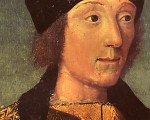
On this day in history, 7th August 1485, Henry Tudor, the future Henry VII, dropped anchor at Mill Bay, near Milford Haven, Wales. When he reached the beach, it is said that he prayed “Judge me, O Lord, and favour my cause.”
[Read More...]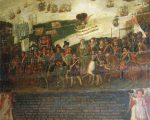
I hope you enjoyed the first part of our Spanish Armada quiz last week. Here’s the second part. Good luck!
[Read More...]
On this day in history, 6th August 1549, the Battle of Clyst Heath took place between the West Country rebels of the Prayer Book Rebellion and King Edward VI’s forces.
Upon hearing of the news of the massacre of around 900 rebels the previous day, two thousand rebels made their way to Clyst Heath where the Lords Russell and Grey were camped, and opened fire. The battle lasted all day, but the rebels were defeated in the end.
[Read More...]
In today’s Claire Chats video, Claire explains what she does on a daily basis and also asks for your help and feedback.
[Read More...]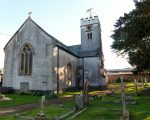
The Battle of Clyst St Mary, which was a battle fought during the Prayer Book Rebellion, took place on 5th August 1549 at the village of Clyst St Mary, 3 miles east of Exeter in Devon.
[Read More...]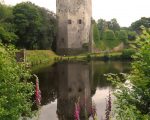
Earlier in this series, I traced the journey of Jasper Tudor and his young nephew Henry’s escape from West Wales and their arrival in Brittany. The Tudors were welcomed to Vannes as guests of the powerful Duke Francis of Brittany before moving to the more remote Château de Suscinio for their own safety. The increased threat of abduction by York’s agents finally convinced Duke Francis to reduce the risk by moving them to separate locations inland.
Fourteen-year-old Henry was relocated to the Forteresse de Largoët, deep in the forest outside of the sleepy town of Elven. His custodian, Marshall of Brittany, Jean IV, Lord of Rieux and Rochefort, had two sons of a similar age to Henry, and it is thought they continued their education together. Henry was however prevented from communicating with his mother in England or his uncle Jasper Tudor, who now resided in a château elsewhere in Brittany.
[Read More...]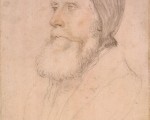
The Battle of Woodbury Common, part of the Prayer Book Rebellion, took place on 4th August 1549 on Woodbury Common, near the village of Woodbury in East Devon. The battle took place at 4am and happened when the rebels, who had been defending Clyst St Mary, marched to Woodbury Mill where Lord Russell and his troops had camped for the night. The rebels were defeated.
[Read More...]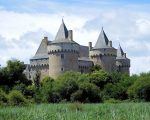
In the first two parts of this series, I followed Jasper Tudor and his fourteen-year-old nephew Henry’s escape from Tenby in Wales and their arrival in Brittany. The Tudors are recorded as spending a year in Vannes as guests of Duke Francis of Brittany but, in October 1472, the duke became concerned they might be abducted by York’s agents. They were moved to his remote ‘hunting lodge’ by the sea, south of Vannes, the Château de Suscinio.
The Tudors’ new home had been fortified in the fourteenth century by Breton knight Bertrand du Guesclin, nicknamed ‘The Eagle of Brittany’, a military commander during the Hundred Years’ War. As well as building the seigniorial residence block and a corner tower known as the Tour Neuve, the moat was deepened and a raising drawbridge added, together with casemates to house artillery. By the time the Tudors arrived, the original thirteenth century château resembled a castle of generous proportions.
[Read More...]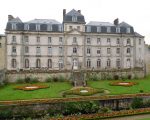
In the first part of this series, I followed Jasper Tudor and his young nephew Henry’s escape from Tenby in West Wales. There are tales of storms and of them being forced to shelter in the lee of the island of Jersey before they were able to make landfall at the Breton fishing port of Le Conquet in September 1471.
Jasper and Henry sought sanctuary from Duke Francis of Brittany and became his guests at the ducal palace, the Château de l’Hermine in Vannes. Duke Francis was a skilled politician, so would have appreciated the political value of the exiled Tudors to King Edward IV of England, as well as to his rival King Louis of France, to whom they were related through the Valois family of Jasper’s mother, Henry’s grandmother, Queen Catherine.
[Read More...]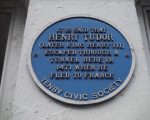
Henry Tudor’s return from exile to victory at Bosworth has to be one of the greatest moments in the history of the Tudor dynasty. So why is the Bosworth story so often told from the perspective of Richard III, with Henry depicted as lucky to have won?
I was born within sight of Pembroke Castle and have always been intrigued by the small room where the thirteen-year-old Lady Margaret Beaufort gave birth to the future king, Henry Tudor. I’ve also stood on the remote beach at Mill Bay near Milford Haven imagining how Henry would have felt as he approached with his uncle Jasper and his mercenary army.
All I knew about Jasper’s father, Henry’s grandfather, Owen Tudor, was that he’d been a Welsh servant who somehow married the young widow of King Henry V, Queen Catherine of Valois. Inspired to write a historical fiction trilogy about them, I wanted to research their stories in as much detail as possible and to sort out the many myths from the facts.
[Read More...]
On 2nd August 1595, as part of the Anglo-Spanish War of 1585-1604, four galleys containing somewhere between 200 and 400 Spanish soldiers landed at Mount’s Bay on the coast of western Cornwall. The fleet was commanded by Captain Carlos de Amésquita and it had left Port Louis, Brittany, France, on 26th July to raid the south-west of England.
[Read More...]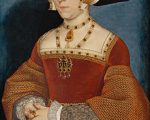
We can learn a lot about history from the way people were buried. Lauren Browne examines the representation of queenship in funeral and burial traditions in this brand new exclusive Tudor Society expert talk.
[Read More...]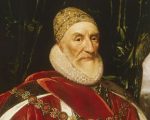
By the first week of August 1588, the battered, defeated and demoralised Spanish Armada had started the first part of its long journey back home to Spain.
The Battle of Gravelines had seen England victorious, and between that and the awful weather Spain had lost five of its main ships and had suffered major damage to many others. Ammunition was pretty much non-existent and food rations were low. All the Spanish commander, the Duke of Medina Sidonia, could do was to try and salvage what was left of his fleet and men and get them home to safety. The English fleet, led by Lord Howard, pursued the Spanish ships as far north as the mouth of the Tyne but gave up on the 2nd August and turned back, dropping anchor at ports such as Harwich and Margate.
[Read More...]